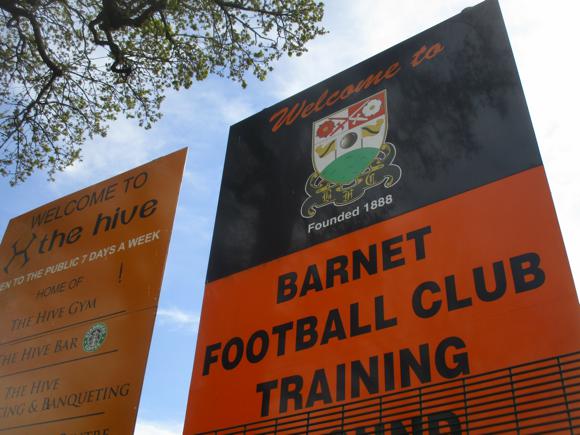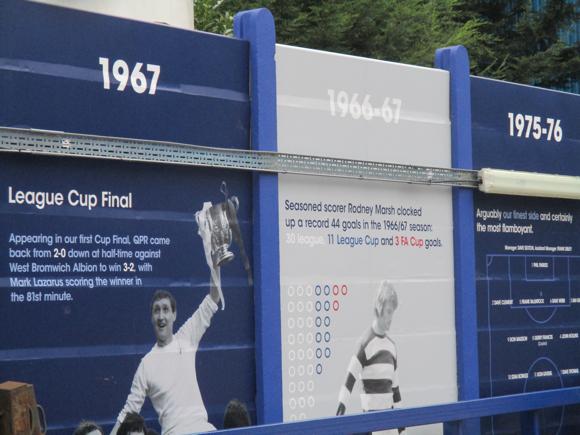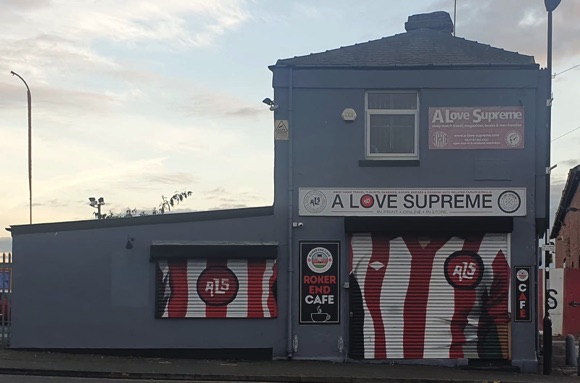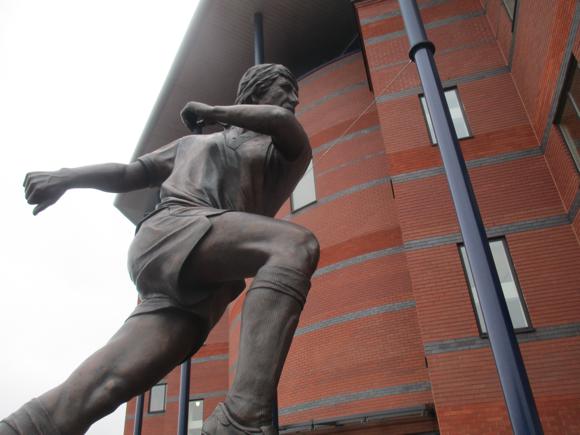A fan’s guide – the club from early doors to today
Agonisingly close to becoming FA Cup finalists in 1997, Chesterfield were still buoyant under casino mogul Dave Allen as owner/chairman until two straight relegations sent the Spireites into the National League in 2018.
in danger of going into free fall, the club was then taken over by the Chesterfield FC Community Trust in 2020 and has since been making a serious challenge for promotion back to the Football League.
The club also owns its ground, now called the Technique Stadium, which replaced the venerable Saltergate in 2010. Considering the serious financial plight Chesterfield were facing under former owner Darren Brown in the early 2000s, the Spireites are in a reasonable position to climb up the table if they ever clamber out of the fifth tier.

The club’s foundation date of April 24 1919 hides a previous half-century of football history in Chesterfield, of clubs being formed and dissolving. The one constant, the ground at Saltergate, would also become the home of this post-World War I Chesterfield FC.
Or rather, Chesterfield Municipal FC – the club had been created by the local council to revive sport in war-traumatised menfolk. Within the year, they were simply Chesterfield FC, within another, they were founder members of the Third Division North.
A string of capable, dedicated managers, beginning with ‘Honest’ Ted Davison, the shortest goalkeeper to play for England, took the Spireites up to the Second and kept them in contention for promotion to the First. Under Norman Bullock in 1939, Chesterfield reached an equal best sixth place – under Bob Brocklebank, they finished fourth in 1947, a club record to this day.

Despite the return of Davison and goals of George Smith in the 1950s, Third-Division Chesterfield could only finish sixth four seasons straight and have hardly done better since. A young Gordon Banks played half a season at Saltergate before being sold on in 1959.
The exception came in the early 1970s. With terrace hero Ernie Moss and his strike partner Kevin Randall at his disposal, Scots manager Jimmy McGuigan steered the Spireites back to the Second and immediately up to fifth place – but that was the club’s last hurrah in the post-war era.
In the league, at least. After 25 years of mainly fourth-flight football and financial scrabblings, the return former Spurs striker John Duncan as manager saw commendable campaigns in the third flight and a historic run in the FA Cup.

Duncan had already gained Chesterfield promotion from the Fourth in 1985 before being poached by Ipswich. Now, with striker Andy Morris, young midfielder/striker Kevin Davies and captain defender Sean Dyche, the Spireites won through to the semi-final of the FA Cup in 1996-97. A 1-0 over Nottingham Forest at Saltergate in the Fifth Round will live long in the memory.
But not as long as the epic semi with Middlesbrough at Old Trafford. In a game which had everything – Spireite underdogs against a team of moneyed Brazilians and Italians, then a red card for Boro that evened the playing field – Chesterfield were denied a legitimate goal when a Jonathan Howard shot bounced in from the underside of the bar. Middlesbrough, already 2-1 down, would probably have wilted at 3-1 with just over 20 minutes to go.
We will never know. A Juninho-inspired Boro charged straight up the pitch, scored a scuffed and dubious penalty and were hanging on for a 3-2 win when Chesterfield-born full-back Jamie Hewitt looped an improbable headed equaliser in the last dregs of extra-time. Pandemonium.
Juninho then bossed the replay, his side easy 3-0 winners.

Dyche, Davies and Morris soon left Saltergate, followed by Duncan, and the club fell into the financial mire after later convicted fraudster Darren Brown became chairman. A supporters’ society saved the day before the club raised the wherewithal to fund a move to a long-mooted new stadium at a former glass factory by the A61 north of town.
By then, Dave Allen, vilified at Sheffield Wednesday, had come on board to oversee and help back the £13 million development that would first become the b2net Stadium. Saltergate farewells, that summer of 2010, were appropriately emotional, not least because the club’s longest-serving player, Derek Niven, scored a stoppage-time winner in the final game there against Bournemouth.
Occasionally pushing the new stadium capacity of 10,000-plus close, the Spireites won the League Two title in 2014, momentum taking them to a play-off place the following season. Manager Paul Cook was nabbed by Portsmouth soon after the two-leg defeat by Preston.

With ex-Chesterfield midfielder Danny Wilson taking over managerial duties, the Spireites survived 2015-16 but hit a negative spiral in 2016-17 – and again in 2017-18. Finishing bottom in League One then League Two, Chesterfield looked as if they might make it three relegations in four seasons when the 2019-20 campaign was curtailed.
Stepping into the breach, the Chesterfield FC Community Trust bought the club from Allen before the 2020-21 season and pointed the Spireites back in the right direction. Making the play-offs that season, Chesterfield went to local rivals Notts County and twice led the one-leg tie. They missed a golden chance to take the lead again when ageing striker Nathan Tyson fluffed a one-on-one against his former club, who then snatched a dramatic last-minute winner.
Chelsea respected Chesterfield enough to field a strong side when the two clubs met in the FA Cup Third Round in January 2022, in front of a near 40,000 crowd at Stamford Bridge. On the scoresheet in earlier rounds, Congo-born forward Kabongo Tshimanga continued leading the charge back to the League, scoring as many goals as games played.








Ground Guide
The field of dreams – and the stands around it








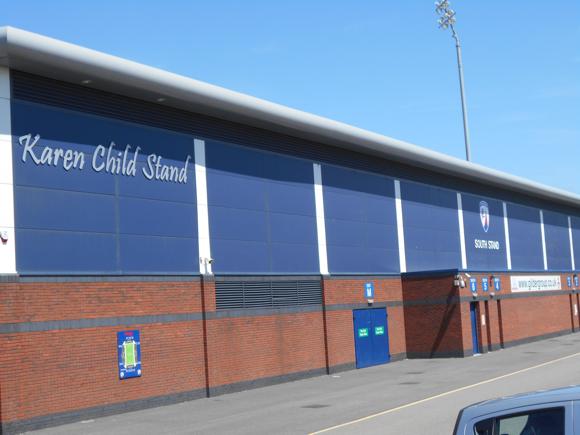



Under the sponsor’s name of Technique, Chesterfield’s out-of-town stadium now feels a little more lived-in after more than a decade of use. Leaving the age-old Saltergate was always going to be a wrench but, with its wall of fame and memorial garden, their new home is not without heart. Curved roofs add a little architectural grace – this stadium is 21st-century but by no means indentikit.
Older fans from the former Saltergate Kop now give voice in the South Stand. Among the sponsors’ names for three of the neat, all-seated, one-tiered stands, the sideline East Stand named after local lottery winner Karen Child. Away fans are allocated the north end, and, if demand requires, the nearest section of the East Stand. The main West Stand contains the executive lounges, club shop and ticket office.
Capacity is just shy of 10,500 – average gates for Chesterfield’s first season in the fifth tier in 2018-19 were around 4,500, so availability isn’t an issue. There should be a decent crowd for the visit of Notts County, all the same.
getting there
Going to the ground – tips and timings

The stadium is directly north from Chesterfield station, quite a way to walk (25-30mins) – and taxis will be caught in slow traffic on match days.
There’s no direct bus service from the station to the stadium. A short walk away, at at Cavendish Street near the crooked spire, Stagecoach services 25, 43, 44, 50 and 50A run between Chesterfield and Sheffield (Mon-Sat daytimes every 20-30mins, Mon-Sat eve/Sun every hr), first setting off from Chesterfield’s bus hub at New Beetwell Street on the south side of town. They head up Sheffield Road and stop right by the stadium, on the Glass Works pub side of the road. Coming back, the stop is on the stadium side – allow 10mins from or to town. The 90 (Mon-Sat every 30mins daytimes only) runs the same route through town, turning off at Tesco just before the stadium a short walk away.
The sat nav code for the Technique Stadium (referred to as the Proact Stadium on most systems) is S41 8NZ – S41 8LF on older systems. The limited match-day parking at the stadium (£7) can be booked through online ticketing for each game. With Tesco not recommended on match days, many park up on sections of Thompson Street (S41 9AR) and Eastside Road (S41 9AT) north of the stadium, and Old Brick Works Lane (S41 9JD) to the south. Stand Road (S41 8SW), by the recreation ground, may be another possibility.
getting in
Buying tickets – when, where, how and how much

Chesterfield’s ticket office (Mon-Fri 9am-5pm, match-day Sat 9am-3.30pm) is by the Superstore behind the main stand. There are also phone sales (01246 269 300, option 1), match-day pick-ups from the ticket office incurring a £1 charge, and online sales.
There are no cash turnstiles. Buy at the ticket office on the day – away fans have their own outlet behind the North Stand.
Prices are set at £18 in the home/away South/North Stands, (over-65s £14, 17-21s £11, under-16s £7) and £20-£22 in the sideline East/West Stands, central sections dearer than outer ones, discount rates £16-£18 and £15-£16, under-16s paying £7 across the board. Match-day sales incur a £1 charge.
what to buy
Shirts, kits, merchandise and gifts

The Superstore (Mon-Fri 9am-5pm, match days) behind the main stand carries the current home and away tops, one blue, the other red, as plain as it gets without having to resort to swirls or dots. Both bear the club badge, of course, a contemporary take on that crooked spire. Third choice is white with green trim.
Gifts for kids portray Chester the Field Mouse, he of the huge ears, a former winner of the Mascot Grand National. First-time visitors may wish to investigate the winter items – despite the windshields and curved roofs of the Technique Stadium, it can get pretty chilly at Chesterfield.
Where to Drink
Pre-match beers for fans and casual visitors




If you do decide to walk up from the station, the first pre-match pub you come to is the St Helen’s, about a third of the way up from town at 78 Sheffield Road, a friendly freehouse with loyal regulars. If you’re staying over of a Saturday, ska, reggae and northern soul nights are regular occasions.
Further up at No.143, the Crown & Anchor, having reverted back from being the Stonegravels, has also been refurbished but still puts on affordable, decent food on Sundays. There are big screens for sport, pool tables and a kids’ play area.
Closer to the stadium, the Donkey Derby, at the roundabout, is a family-friendly pub/restaurant, all skillet-sizzled steaks and lashings of lager. It packs out on match days with home and away fans.

Right opposite the stadium, the former Rose & Crown/Spireite is now The Glassworks, refurbished and reopened in 2019. A showcase for the local Brampton Brewery (‘Lovingly conceived under dreaming spires’), it serves guest beers too, a quick-serve outlet in the beer garden doing a roaring trade on match days. It goes big on TV sport, of course. The name and photos inside refer to the factory that once operated where the Technique Stadium now stands. Sensible away fans welcome, at least while Chesterfield play in the National League.
Away fans traditionally prefer the Derby Tup, some 300 metres up the Sheffield Road at No.387. An outlet of the Nottingham-based Castle Rock brewery, it’s a CAMRA-award winning venue that offers ten ales, five ciders and world beers. Football isn’t the focus here – the Derby Tup just happens to be within a shortish walk of the North Stand at the Technique Stadium, and fussy about the quality of ale it provides.
At the stadium, the club is planning to install the Bar 1866 in the car park behind the South Stand – ideally in time for a welcome return to the Football League.







